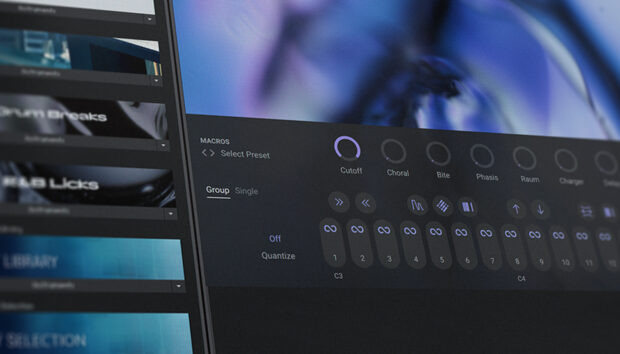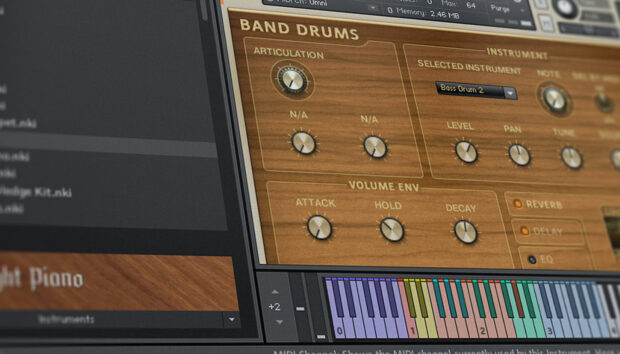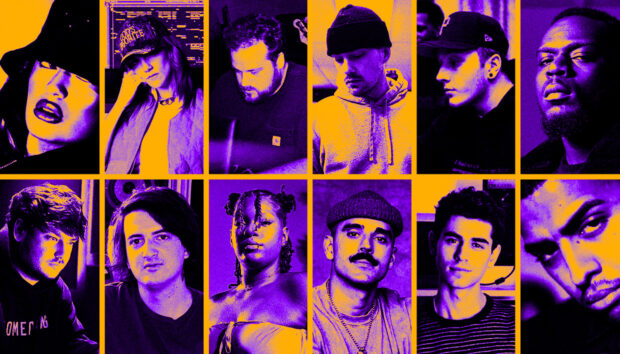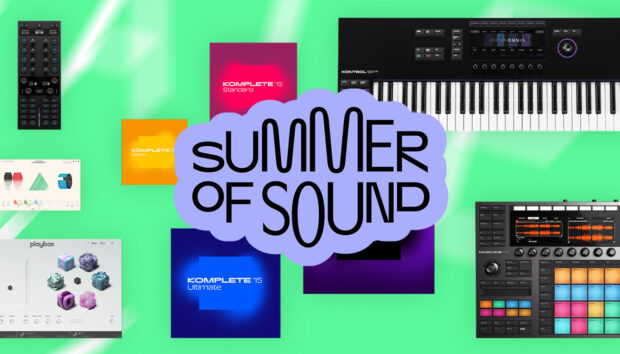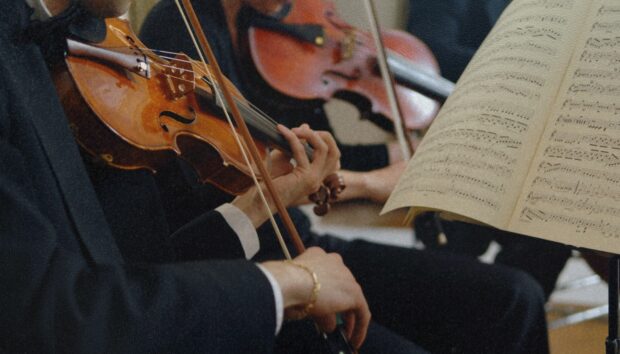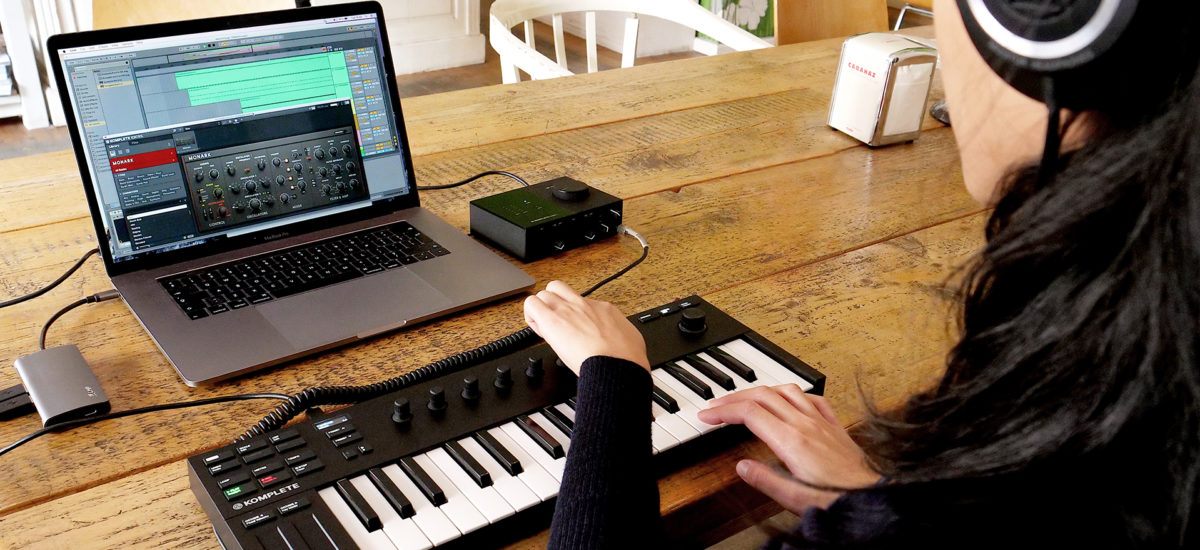
Studio-quality technology no longer means bulky, heavy equipment – and with a whole industry of software developers behind you, all that’s really necessary is a way to carry your laptop, tablet, or phone from one place to the next. And with a world of portable hardware also available, it’s now possible to create a new track from scratch on your way to play it in the club.
There are now a host of options for making music on the move – whether you’re in a plane, a train, a cafe, or simply basking in the sunshine to get rid of that ‘studio tan’. Whatever you want to achieve, and wherever you want to achieve it, we’ve put together this guide to help you choose the setup you’ll need, the habits that’ll help, and the mindset to help make it all work.
Essential: Laptop, tablet, or phone
Naturally, a laptop computer is near-infinitely more portable than a desktop setup, providing a complete solution that’s as familiar as – if not identical to – your home or studio system, but it’s not the only option.
For a travelling music setup, having a handheld touchscreen system that can fit right into a backpack becomes far more useful than it is in a pro studio. The iOS ecosystem really comes into its own here, so frequent travellers may find it worth investing the time in discover apps like iMaschine 2, Cubasis, Audiobus, and the world of AUv3 ‘plug-ins’.
Certain apps also work on phone devices, so if the idea of having a virtual studio right in your pocket appeals to commuter-producers, there’s another dimension to touchscreen music creation.
Whatever system you choose to run with, when you’re on the move, probably the most important consideration for how much you can get done is the amount of energy you have available to you…
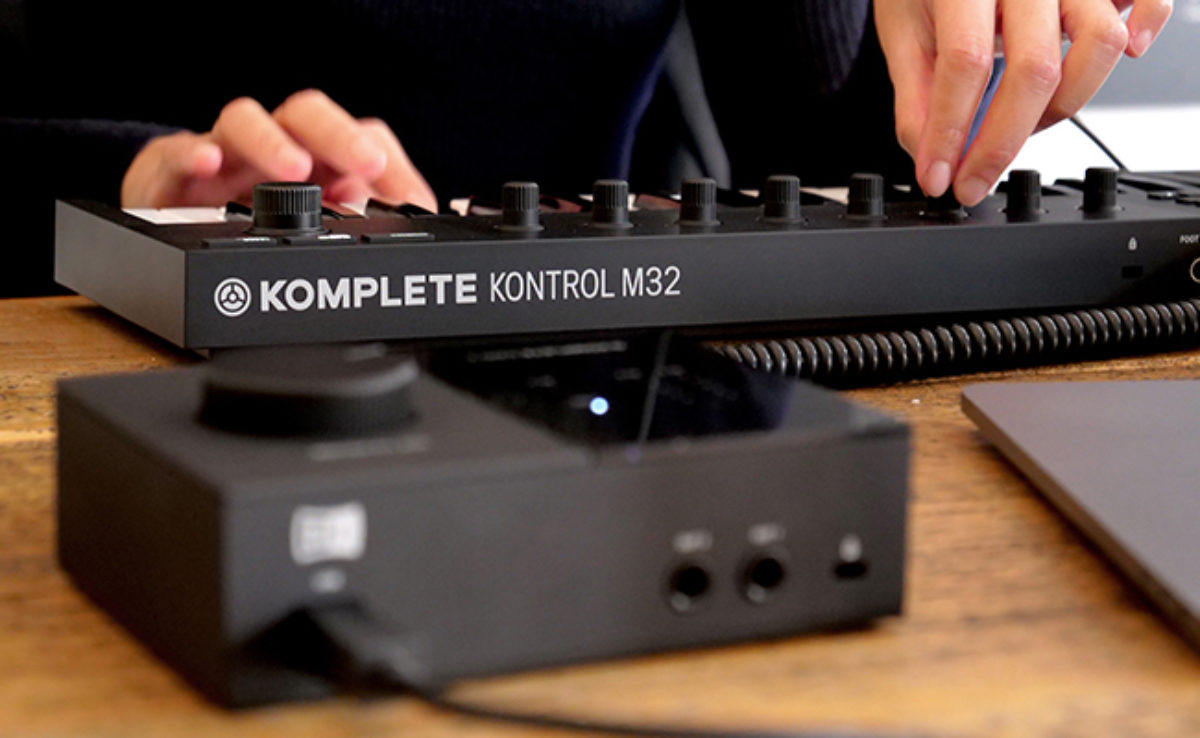
Keep the power flowing
Not to be patronising here, but your devices will need to have access to electricity, at least from time to time. This isn’t always possible on long journeys, and always dependent on your surroundings – a modern bus might have power outlets and USB charging ports, while an old plane will often have nothing of the sort. Waiting rooms and bars are a mixed bag, but check for outlets as a priority when finding a place to settle down. You could invest in a power bank, but this also gives you more to carry around in the first place.
So how can you make the most of your battery and keep your work flowing for as long as possible? Primarily, concentrate on the system itself: Reduce your device’s brightness to the lowest tolerable level, switch off WiFi, Bluetooth and other connections where possible, and close background processes such as Dropbox, Skype and other programs and tasks that might be taking up resources.
Next, move onto your music-making habits: your computer’s CPU will likely take up the most energy – if you push the processor too hard, your system will run the fan to cool things down, using up even more energy. Complex synths, effects plug-ins (especially delay and reverb) can be especially demanding on the processor, so keep an eye on your DAW’s CPU meter while producing. Rendering audio is also demanding on a processor, but doing this to freeze MIDI tracks can save CPU cycles in the longer-term.
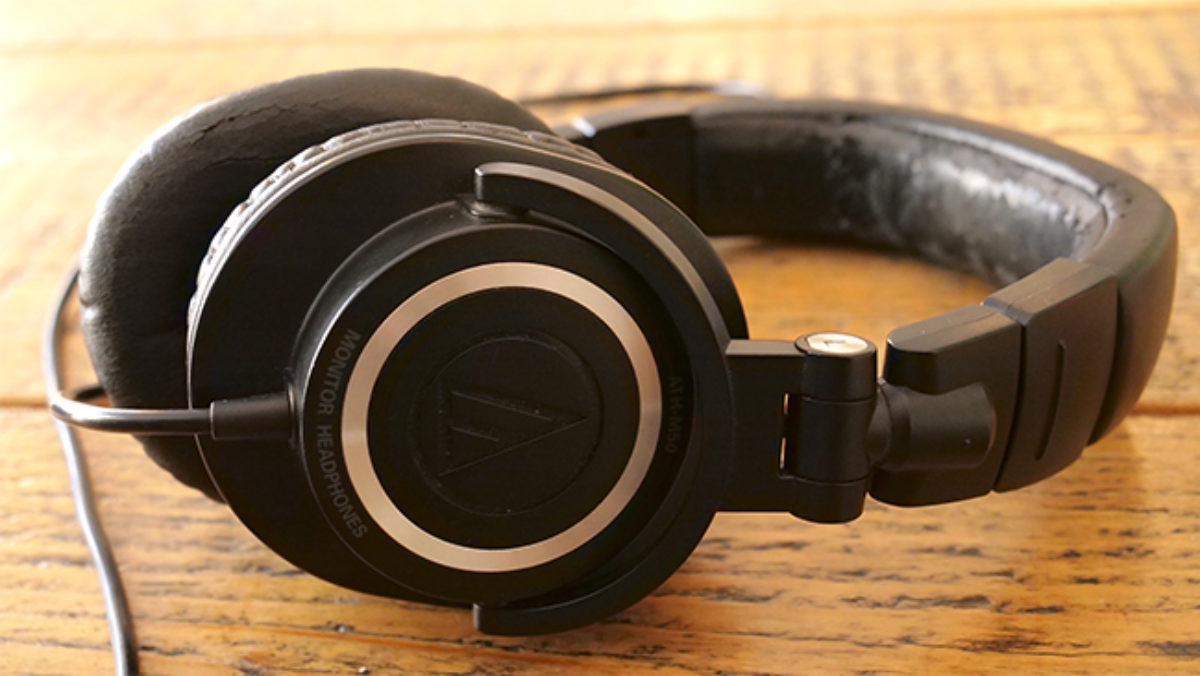
Essential: Headphones
When you’re moving around the world, a huge pair of studio monitors is out of the question. While there are options for relatively powerful small-sized monitors – check out IK Multimedia’s iLoud Micro (€366) and Genelec 8010 (€230) – the far more practical option is to carry around a decent pair of headphones. Not only do these deliver pro-quality sounds direct to your ears, but they also help cut down any sound that’s happening around you.
Price aside, there are two main considerations when choosing headphones for on-the-go. The first is whether they’re closed- or open-backed. Open-backed options give a more faithful sound, but can be heard by those around you; closed-backed ‘phones give extra isolation for both you and others.
Professional headphones also tend to come in a range of impedance ratings. Measured in Ohms, this is sort of like electrical resistance. Higher-impedance headphones (eg. 250Ω) require amplifiers to run properly, while headphones towards 25Ω are more appropriate to plug straight into a standard headphone port – although these can then overload if then plugged into more high-end equipment.
Recommended Headphones
Beyerdynamic DT 990 Edition Open 32 Ohm (€190) // Audio-Technica ATH-M50x (€140)
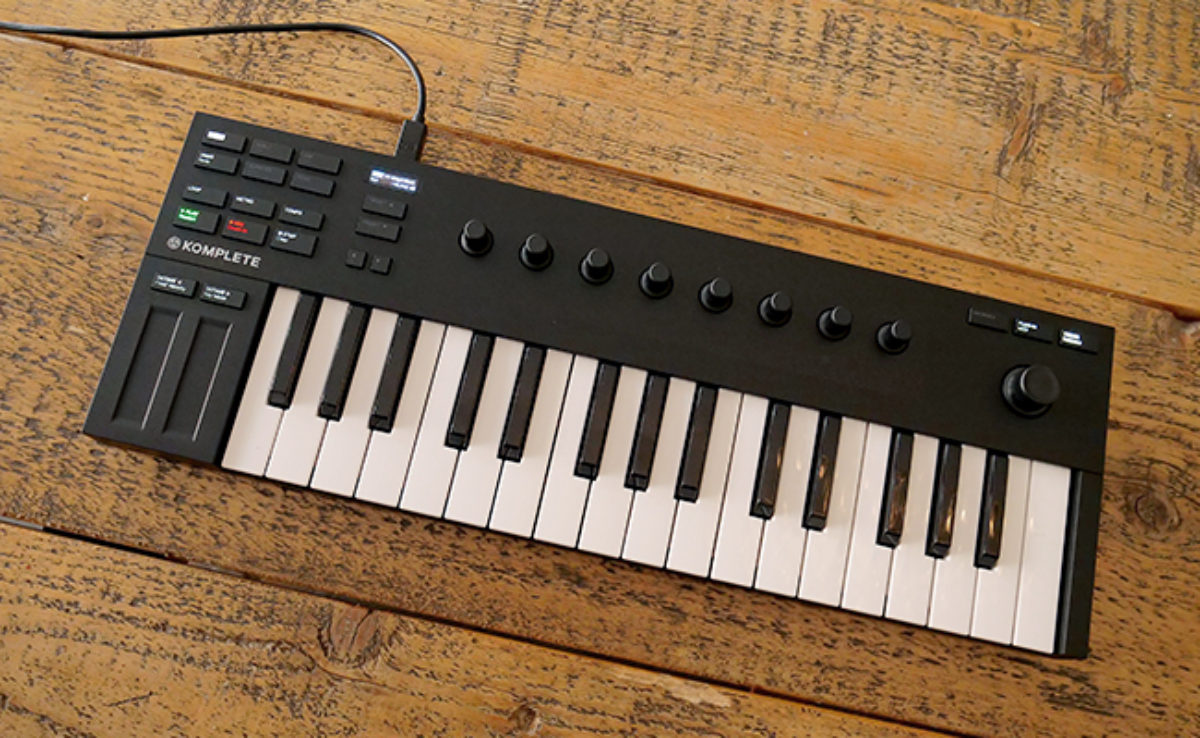
Optional: Portable control surface
It’s entirely possible to make music on-the-go with a keyboard and mouse alone, but depending on your circumstances, you might get a lot more done when you take a small MIDI keyboard along for the ride. Most smaller MIDI controllers are powered via the USB connection.
When investigating the controllers that will fit into your bag, it’s the thickness as well as depth and width that matter. Let’s take fully weighted keys out of the equation, and settle for a more basic, backpack-friendly approach.
With 32 compact keys, two touch strips, DAW control, performance features, and eight rotary encoders packed into a 5cm-thick, 48cm-long surface, the KOMPLETE KONTROL M32 makes a lot of sense as a road-worthy companion, taking care of workflow, sound selection, and performance controls when added to your setup.
As well as the all-important octave selector buttons to extend the range of a small keyboard, the M32 also includes KOMPLETE KONTROL features for browsing NKS-compatible patches within your DAW, and it ships with Ableton Live Lite, Maschine Essentials, three virtual instruments, the KOMPLETE START package of instruments and effects and more.
Recommended Control Surface
KOMPLETE KONTROL M32 (€119)
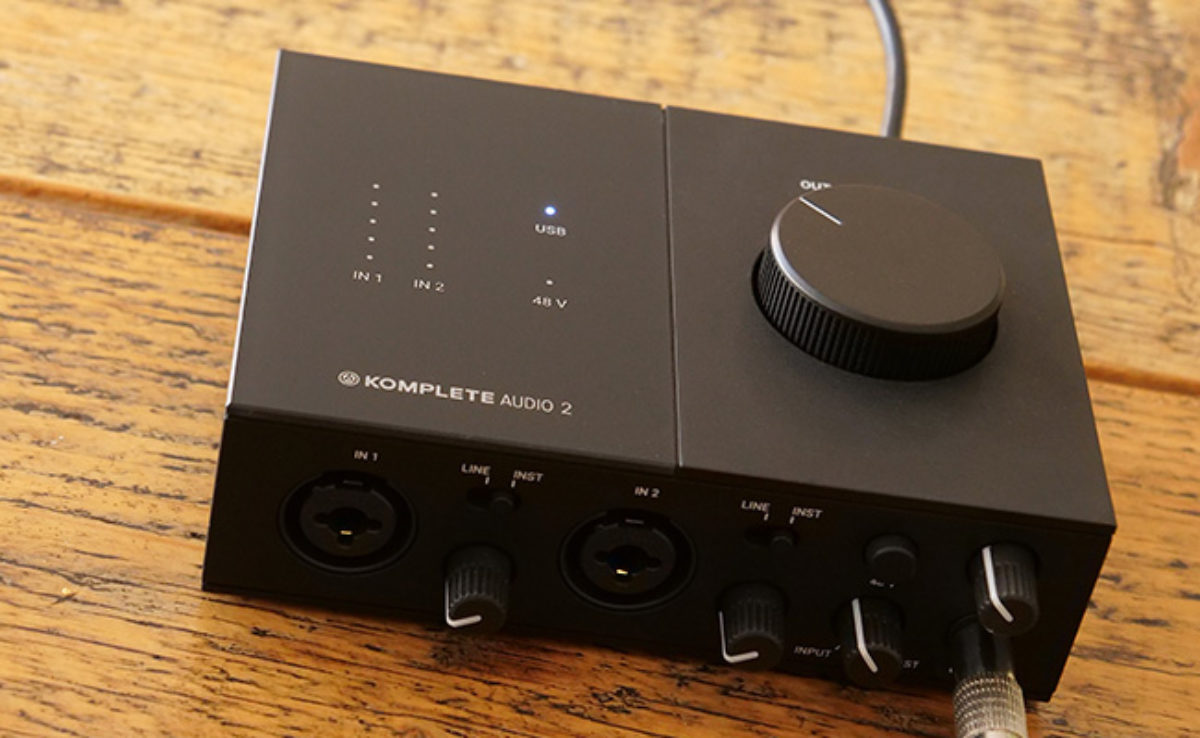
Optional: Audio interface
Depending on the kind of musician you are, you may need to settle down to record instruments and vocals every now and then. If so, having a portable but powerful audio interface in your bag of tricks is a necessity.
Audio interfaces are, noticeably, always large and relatively heavy. This is thanks to the need for stability while thick cables are plugged between them and professional-quality music gear. While there’s little chance of using them on a train, plane or automobile, neither is there the ability to pull out a guitar in any of these places.
The KOMPLETE AUDIO range of interfaces pack double inputs, headphone and monitor outputs, top-mounted volume control, draw phantom power straight from your computer when using condenser microphones, giving you all you need for a basic recording setup that you can bring to the party with you.
Recommended Audio Interface
KOMPLETE AUDIO 1 (€99) features individual jack and XLR inputs for line inputs, instrument inputs or microphones inputs, while KOMPLETE AUDIO 2 (€129) features two combi inputs, facilitating either connection twice. Both also ship with Ableton Live Lite, KOMPLETE START, MASCHINE ESSENTIALS, three effects plug-ins, and two months’ access to Sounds.com.
Optional: Sound content
There’s a whole range flavor available with Expansions. These royalty-free packs are fully loaded with hi-res loops and one-shots, BATTERY and MASCHINE patches, plus MASSIVE, MONARK, and REAKTOR PRISM presets.
Each Expansion comes with its own theme to inspire the vibe you want to bring to a track, with titles like PROSPECT HAZE, MOLTEN VEIL, and LONE FOREST giving you access to new sonic worlds.










